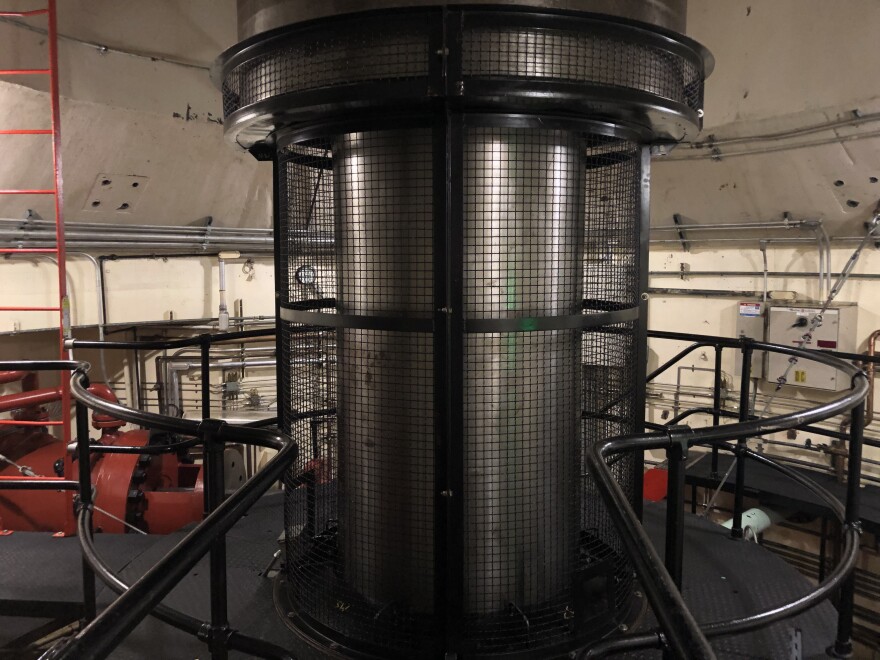With a second offshore wind farm now on the way, Massachusetts is primed to have enough wind energy in the next decade to power about 800,000 homes. But some people might be wondering, what will more renewable energy sources mean for power in the state? How will our lights still turn on when the wind isn’t blowing, and the sun isn’t shining?
Part of the answer to that question lies out near the border between Massachusetts and New Hampshire: Northfield Mountain Power Station in Erving, Massachusetts is the old school solution to how the grid handles energy shortages, and one of the state's oldest batteries.
"I call this the biggest battery in New England," Doug Bennet, director of the power station said.

Northfield Mountain may not be what you think of when you picture a battery. The station is located inside of the mountain and operates by pumping and releasing water between a reservoir on top of the mountain, and the Connecticut River that runs at the mountain’s base.
Bennett took us down a half-mile road into what looks like a cave or a secret underground lair, to see why batteries are becoming more important to New England's energy grid.
"During a heat wave, the peak [in demand] would be sometime in the afternoon, when everybody was cranking their air conditioners. And because of all the solar, that peak has actually moved until later in the day, but it's also an operational challenge for the ISO [New England's grid operators]," Carter Wall, communications director for Northfield Mountain said.
That’s because later in the day, solar energy comes offline, but electricity demand continues.
"Our facility has been able to play a role in helping them deal with that peak shift," Wall said.

When the New England energy grid has excess energy, it can send that over to Northfield, where that energy is used to pump water to the top of the mountain. When the grid needs energy, like during a heat wave or a time of unexpected energy use, water is released to turn massive turbines, creating electricity which is then sold back to ISO New England.
The turbines themselves sit about a mile into the mountain. They can process about 27,000 gallons of water per second.
Northfield Mountain facility was built in 1972. Modern utility scale batteries don’t work like Northfield Mountain. They’re more like what you imagine of a battery: similar to giant car batteries that hum. Still, they can support the grid in the same way.
Roger Lin of NEC Energy Solutions said he sees a growing need for batteries as Massachusetts pursues its renewable energy goals.
"There's going to be a greater need for energy storage as more renewables come online, primarily because of the variable nature of the fuel that powers the wind farms and solar farms," Lin said. "It's not as controllable, obviously, as a fossil fuel generator is."

However, the two offshore wind companies that have won contracts in Massachusetts, Vineyard Wind and Mayflower Wind, have not included an energy storage plan.
Dan Finn-Foley, a battery expert at energy consultants Wood Mackenzie, said that's ok.
"Right now, it's really just not necessary. You really don't need energy storage for an offshore wind farm today in the United States," Finn-Foley said. "Offshore wind plus energy storage is something that's going to come along once you have a lot more renewable integration on the grid."
But the state has announced a goal of having 35 percent of its generated energy to be from renewable sources by 2030, so it’s offering financial incentives now for companies to install battery storage in preparation for this shift. Just this past September, a new utility scale battery was unveiled on Nantucket. It could be the first of a legion of such batteries to help manage offshore wind energy as it comes online.







